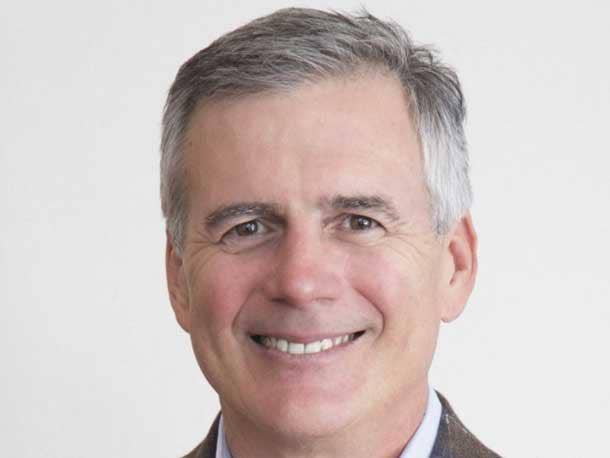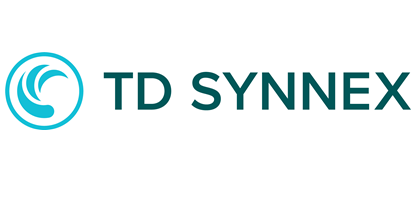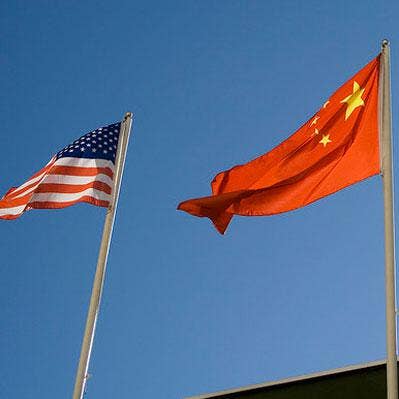TD Synnex CEO Rich Hume On The ‘Bigger Growth Areas’ In The Market
‘We fundamentally believe that story remains fairly consistent: It will be cloud, security, analytics, IoT and hyperscale infrastructure. And regardless of where growth is for the total industry, that set of offerings will outpace the industry by at least two times the growth, if not more,’ says TD Synnex CEO Rich Hume.

A Very Good Year, With More To Come
IT distribution giant TD Synnex Tuesday reported its fourth fiscal quarter and full-year 2022 financials. The company reported revenue for the quarter of $16.25 billion, up about 4 percent year over year, GAAP net income of $221.2 million, up 85 percent, and non-GAAP net income of $329.8 million, up 20 percent.
Comparable full fiscal year 2022 figures were not announced, given that TD Synnex as a company was formed about a year ago through the merger of Tech Data and Synnex, and Tech Data at the time was not a public company. However, Hume said, full-year revenue for the combined organization grew 14 percent in fiscal 2022 over 2021 adjusted for constant currency and accounting principles.
That will change going forward. TD Synnex CEO Rich Hume told CRN in an exclusive interview that the merger closed in September 2021, making financial comparisons easier.
[Related: Done Deal: 5 Things To Know About The New TD Synnex]
However, no matter how financials are reported, TD Synnex has continued to grow over the past year and is expected to do so going forward, although that growth is likely to slow as the IT business as a whole experiences slower growth in 2023, Hume said. The big drag going forward is likely to continue to be the slowdown in endpoint solutions, mainly PC sales, which he said will be more than offset by increasing sales of advanced solutions.
That advanced solutions growth plays to TD Synnex’s strengths, Hume said.
“When we get to the back half of [next] year, we think that that category of advanced solutions will return more towards historical norms from a growth pattern perspective,” he said. “And then, as we have been saying for a long time, TD Synnex talks about where the bigger growth areas are in the market. And we fundamentally believe that story remains fairly consistent: It will be cloud, security, analytics, IoT and hyperscale infrastructure. And regardless of where growth is for the total industry, that set of offerings will outpace the industry by at least two times the growth, if not more.”
2023 should be a year of continued growth for TD Synnex. Here is a closer look at how Hume sees the prospects for TD Synnex and IT distribution in general.

TD Synnex reported full-year fiscal 2022 revenue of $62.34 billion, up 97.2 percent over the previous year. Last year’s figure includes Tech Data but not Synnex revenue. What is the comparison of fiscal 2022 to the combined Tech Data and Synnex fiscal 2021 revenue?
Remember, the publicly traded entity is the traditional Synnex business. So a lot of that revenue just gets accounted for that way. So therefore, it’s an apples and oranges [comparison]. But the whole revenue growth at constant currency and when adjusted for normalizing the accounting policies was 14 percent overall growth. So we were very happy with that growth. We think it’s good growth at this point in time.
So 14 percent growth if you include both the legacy Synnex and the legacy Tech Data revenue.
Right, at constant currency and adjusted for specific accounting policies.
So when will TD Synnex report comparable total year-over-year revenue on a regular basis?
If you listen to the earnings call, we actually narrate that. It’s actually generally accepted accounting principles that requires the press release to be the way we had shown it. But if you get the investor presentation, or you listen to the narrative, we talked about the apples to apples 14 percent growth. But we’re at the point now where it’ll be like-for-like going forward. There’s no apples and oranges anymore. But that being said, I don’t want to lose sight of the fact that it was a very strong growth apples to apples.

So what was behind the strong growth given all the talk about inflation and recession toward the end of the year?
So a couple of things. At the start of last year, we had said that we thought that the PC segment, the PC ecosystem, we call it endpoint solutions, would moderate. And, in fact, we saw that. So there was actually a very marginal decline within the endpoint solutions. The growth actually came from three primary areas. The first was advanced solutions, which is data center and infrastructure-type offerings. The second was our Hyve business, which is the hyperscale business where we serve large cloud service providers or large CSPs. And the third area is we have some specialized businesses, global components distribution, as well as some strategic logistics services that had grown quite nicely as well.
Looking at calendar 2023, what are some of the key changes that you’re looking versus 2022?
So first, it’s important to note that in our Q3, with apples to apples revenue, we had grown adjusted for currency and accounting policy at 15 percent. In Q4, as I just stated, we had grown at 14 percent. And in Q1, our revenue guide is somewhere between 3 [percent and] 5 percent. So obviously, there’s a meaningful step down in terms of revenue growth for provided insight relative to next year. So the market is slowing down. Within that market, just like in the past, we talk about high-growth areas being cloud, security, analytics, IoT and hyperscale infrastructure. From a gross billings perspective, those areas have now become more than 20 percent of our total business. So they’ve grown quite nicely. And we would anticipate those categories to grow faster than the market. And the core of the market, I’ll call it the legacy part of the market, we would anticipate low single-digit growth, but combined with the high-growth technologies and the legacy of the market, we would judge the market to be growing at 3 [percent] to 5 percent next year.

Given that so much of IT is manufactured in China, are you expecting any further impacts this year on supply chains because of the increasingly serious COVID-19 situation?
So first, I’ll comment on the supply chain in total, and then we’ll handle the tactical. We reported this quarter that our backlog has been meaningfully reduced. And when we think about two business segments, that PC ecosystem stuff and the data center and advanced solutions stuff, we believe that we’re fairly near to our historical profile for the PC ecosystem content. So that’s become quite serviceable. We still have an elevated backlog in advanced solutions, so servers, storage, networking, etc. But our best guess is that by the time we get to the middle of the year that that supply chain will be becoming nearer the profile. There might be just a couple of outliers to that. Which then leads me to my comments. Tactically, we aren’t anticipating any significant supply disruptions with the current COVID situation in China. You have to realize that, while this is happening, China also had a policy change to actually open up their markets from an overall COVID perspective. So from all we know and read is, the COVID circumstance over there is based on the variants that provide a couple of days of illness, but much fewer cases of anything critical. So at this point, we aren’t anticipating a supply hiccup associated with their current COVID issues.
During the quarter, TD Synnex’s Americas and Asia-Pacific Japan revenue rose, but European revenue actually fell 2.5 percent. Why the fall in Europe? Is it related to the Russia-Ukraine war?
It’s strictly related to currency. Europe has grown quite nicely, but the euro has devalued quite substantially. And that’s reflected in the result. But the actual constant currency growth in Europe is quite fit. We’re quite pleased with it.

For 2023 what are some of the things you’re seeing that would impact your company’s business and maybe even IT and distribution in general? What are the biggest macro trends that you’re following?
Let’s start with PC ecosystem. I think it’s been well reported by the vendor community, and we aspire to their point of view, that the PC ecosystem category will be a little bit slow in the first half of the year. But then we would anticipate better growth attributes in the second half of the year, primarily driven by a couple of things. No. 1 is operating systems transitions always are a good catalyst. When we had come through the COVID period, there was a meaningful mix shift within the category away from desktop and more toward mobile devices, mainly laptops. Those tend to have a bit shorter life cycle versus the desktop. And so that is something that will create demand a bit earlier. And then the third is, and I think it’s pretty true from an industry perspective, that with the dynamic of the workplace being more flexible, we’re seeing richer configurations being deployed. So those three things will provide an opportunity, as we move through the back half of the year as an industry.
The second thing is, from advanced solutions, server, storage, networking, etc., we would anticipate the first half [of 2023] will continue to have a backlog work down, which will boost revenue a little bit. And then when we get to the back half of the year, we think that that category of advanced solutions will return more towards historical norms from a growth pattern perspective. And then, as we have been saying for a long time, TD Synnex talks about where the bigger growth areas are in the market. And we fundamentally believe that story remains fairly consistent: It will be cloud, security, analytics, IoT and hyperscale infrastructure. And regardless of where growth is for the total industry, that set of offerings will outpace the industry by at least two times the growth, if not more.

How will inflation and the potential for a recession impact the business and TD Synnex and IT in 2023?
From a macro level, we know that over the last 15 years that IT has outpaced GDP by about 3 points. And we’re a very Europe- and North America-concentrated business. The last time I looked at GDP predictions for the Americas, it was about 0.5 or 1 percent. Europe is a decline of about three-tenths of a percent. So call GDP predictions pretty well flat. And so if you think about the historical average of the IT market outgrowing the average GDP by about 3 points, that would say to expect IT growth somewhere between 2 and 4 points, total market-wise. That’s the way we think about it. That’s our methodology. And so it’s certainly growth rates that are materially lower than what we’ve seen over the last couple of COVID years.
Is there anything TD Synnex can do to prepare for that?
Already underway. We want to make sure that we’re really taking advantage of where the market is growing faster. We want to make sure that we’re providing the service to our customers to hopefully allow us to get a little larger piece of the pie through excellent execution and delivering on our commitments. And that’s the way we hope to inch above the growth of the market moving forward.

Anything else you think we need to know?
Yes, there is one pretty significant thing. It’s a comment on the merger. So we’re now 16 months in, and I say this sincerely, we could not be more pleased. I’m often asked about what are some of the best things about the merger, and what’s contributing to its success? And I’ll just share two thoughts with you. First, our customers and vendors are really, really positive. And they have been from day one, and they continue to be, and they know the value proposition is resonating, and I think it’s showing in the growth of our business overall. The second thing that’s not lost on me is that excellence in those relationships come from 23,000 co-workers that we have. We recently had our first engagement survey with TD Synnex, and the level of engagement is quite high. Engagement is very well tied to how people are feeling about things. The last piece that I would mention is that we’re frequently asked about the ERP transitions. Approximately 45 percent of the legacy Tech Data has moved into our strategic ERP and CIS [Synnex’s legacy ERP platform]. So somewhere between two-thirds and 70 percent of our total America‘s business is now on our strategic platform. And we would anticipate that we would ramp up the remaining transitions as we had already stated by the time we complete year two, which would be Sept. 1.